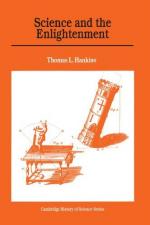
|
| Name: _________________________ | Period: ___________________ |
This quiz consists of 5 multiple choice and 5 short answer questions through Chapter 5, Natural History and Physiology.
Multiple Choice Questions
1. In Chapter 5, who wrote, "We may conclude that the organs of the body have not always existed, but have been formed successively - no matter how this formation has been brought about"?
(a) Leibniz.
(b) Spallanzani.
(c) Wolff.
(d) Haller.
2. Who, as both a chemist and a physician, was the first to criticize mechanistic explanations while his books on chemistry and physiology influenced Europe?
(a) Stahl.
(b) Shaw.
(c) Hoffmann.
(d) Cullen.
3. In 1757, thirty years after Hales described his experiments with ________, Joseph Black discovered the phenomenon of ________.
(a) Latent heat / Fixed heat.
(b) Fixed air / latent heat.
(c) Vaporization / Dissertation.
(d) Volatile liquid / fixed heat.
4. Chapter 5 states that the property of "irritability" had first been recognized by ________, who used it to explain why the gall bladder does not discharge bile into the intestines constantly but only when bile is needed.
(a) Haller.
(b) Hoffmann.
(c) Glisson.
(d) Bordue.
5. The narrator explained in Chapter 4 that there was very little in Lavoisier's activities prior to 1772 that revealed any interest in ________.
(a) Distillation.
(b) Evaporation.
(c) Combustion.
(d) Condensation.
Short Answer Questions
1. Which German metaphysician, when asked in 1785 if he believed he lived in an enlightened age, answered, "No, we are living in an age of enlightenment."
2. Joseph Black studied ________, which had only recently been used as a medicine, according to Chapter 4.
3. Robert Whytt and Charles Aston studied the properties of ________ and ________ according, to the narrator in Chapter 4.
4. The ________, who had been leaders in experimental physics during the seventeenth century, continued to hold a prominent place until their order was suppressed in 1773.
5. The "Philosophical Letters" was a product of Voltaire's visit to ________ according to Chapter 2.
|
This section contains 280 words (approx. 1 page at 300 words per page) |

|




